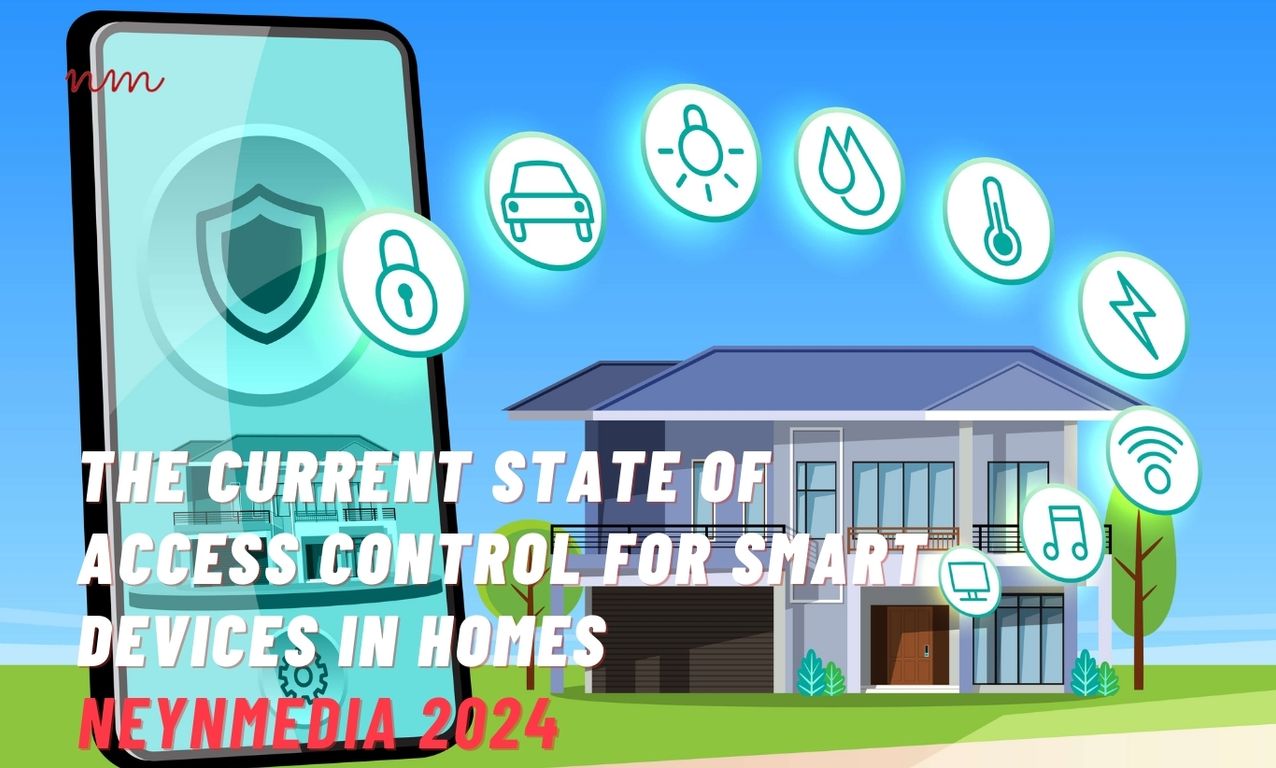The current state of access control for smart devices in homes
In the realm of home automation, access control for smart devices has emerged as a pivotal aspect of ensuring security and privacy. With the proliferation of internet-connected gadgets, the need for robust access control mechanisms has become paramount. In this blog, we will delve into the current state of access control for smart devices in homes, exploring the challenges, vulnerabilities, and best practices associated with managing access to these devices.
I believe that access control for smart devices in homes is still in its infancy, with many challenges and vulnerabilities that need to be addressed. However, I am optimistic that as the technology continues to evolve, we will see more robust and user-friendly access control solutions emerge.
As a writer with 10 years of experience in the field of home automation, I have witnessed firsthand the evolution of access control for smart devices. I have seen the challenges that homeowners face in managing access to their devices, and I have also seen the progress that has been made in developing more secure and user-friendly solutions.
The Current State of Access Control for Smart Devices in Homes
The proliferation of smart devices in homes has led to a growing need for effective access control measures. These devices, which include everything from thermostats and door locks to security cameras and smart speakers, offer a range of benefits, including convenience, energy efficiency, and enhanced security. However, they also introduce new vulnerabilities that can be exploited by unauthorized users.
The Challenges of Access Control for Smart Devices
The unique characteristics of smart devices pose several challenges for access control. First, these devices are often connected to the internet, which makes them vulnerable to remote attacks. Second, they often have limited processing power and memory, which can make it difficult to implement robust security measures. Third, they are often used by multiple users, which can make it difficult to manage access rights.
Current Access Control Solutions
A variety of access control solutions are available for smart devices. These solutions can be divided into two main categories: device-based and network-based. Device-based solutions are implemented on the smart device itself, while network-based solutions are implemented on the network to which the smart device is connected.
Device-based access control solutions typically use a combination of authentication and authorization mechanisms. Authentication mechanisms verify the identity of the user, while authorization mechanisms determine what actions the user is allowed to perform. Network-based access control solutions typically use a combination of firewalls, intrusion detection systems, and access control lists to restrict access to smart devices.
Emerging Trends in Access Control for Smart Devices
Several emerging trends are shaping the future of access control for smart devices. These trends include the use of artificial intelligence (AI), machine learning (ML), and blockchain technology. AI and ML can be used to develop more sophisticated authentication and authorization mechanisms, while blockchain technology can be used to create secure and tamper-proof access control systems.
Conclusion
The current state of access control for smart devices in homes is evolving rapidly. New technologies and solutions are emerging all the time, and it is important for homeowners to stay informed about the latest developments. By taking the necessary steps to secure their smart devices, homeowners can protect their privacy and security.
FAQs about The current state of access control for smart devices in homes
1. What is the current state of access control for smart devices in homes?
The current state of access control for smart devices in homes is rapidly evolving, with new technologies and solutions emerging all the time. Some of the most popular methods of access control include biometrics, voice recognition, and facial recognition. These methods are becoming increasingly sophisticated and accurate, making them more difficult for unauthorized users to gain access to smart devices.
2. What are the benefits of using access control for smart devices in homes?
There are many benefits to using access control for smart devices in homes, including:
- Improved security: Access control can help to prevent unauthorized users from gaining access to smart devices, which can help to protect your home and your privacy.
- Convenience: Access control can make it easier for you to control your smart devices. For example, you can use voice commands or facial recognition to unlock your door or turn on your lights.
- Energy efficiency: Access control can help you to save energy by automatically turning off lights and other devices when you leave your home.

3. What are the challenges of using access control for smart devices in homes?
There are also some challenges associated with using access control for smart devices in homes, including:
- Cost: Access control systems can be expensive to install and maintain.
- Complexity: Access control systems can be complex to set up and use. This can make it difficult for some users to take full advantage of the system’s features.
- Security: Access control systems can be vulnerable to attack. This means that it is important to choose a system that is secure and to take steps to protect your system from attack.
4. What are the future trends in access control for smart devices in homes?
The future of access control for smart devices in homes is bright. Some of the trends that are expected to shape the future of access control include:
- Increased use of biometrics: Biometrics, such as fingerprints and facial recognition, are becoming increasingly popular for access control. This is because they are more secure and convenient than traditional methods of access control, such as passwords.
- Integration with other smart home devices: Access control systems are becoming more integrated with other smart home devices, such as thermostats and lighting systems. This allows you to control all of your smart home devices from a single interface.
- Increased use of artificial intelligence (AI): AI is being used to develop new and innovative ways to control access to smart devices. For example, AI can be used to identify and track users, and to learn their preferences. This information can then be used to create personalized access control policies.
5. What are some tips for choosing an access control system for a smart home?
When choosing an access control system for a smart home, there are a few things to keep in mind:
- Consider your needs: What are your specific needs for access control? Do you need a system that can control access to all of your smart devices, or just a few? Do you need a system that is easy to use? Do you need a system that is secure?
- Do your research: There are many different access control systems available on the market. It is important to do your research and compare different systems before making a decision.
- Get professional help: If you are not sure which access control system is right for you, you can get professional help from a qualified installer.
Recent Post:



